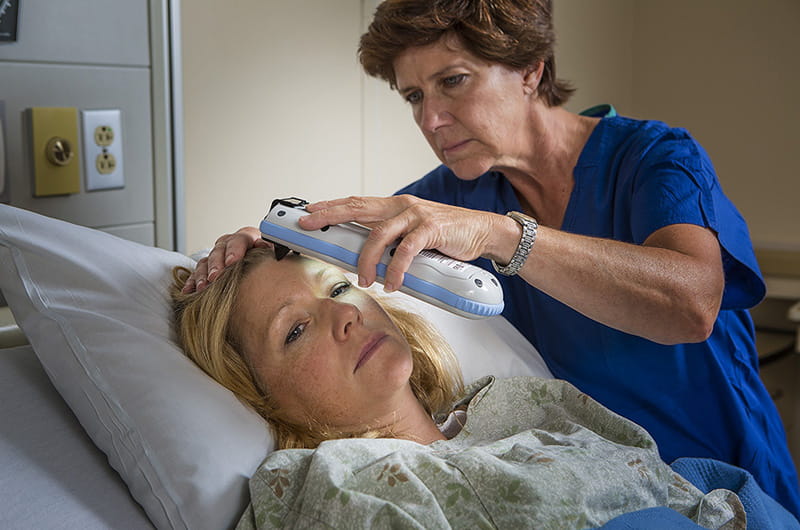Drexel Biomedical Engineers to Help Upgrade Brain Injury Detection Device Used by Navy and Marines

- Drexel Environmental Collaboratory Releases Cross-Sector Findings on Severe Weather Recovery Challenges
- Drexel Launches the Manuel Stamatakis Center for Alternative Investments at the LeBow College of Business
- How and When Could AI Be Used in Emergency Medicine?
- Faculty Highlights: Recent Awards and Grants

A team of researchers from Drexel University’s School of Biomedical Engineering, Science and Health Systems has been called on to help upgrade a handheld brain scanning device used by the military to assess injuries in the field. InfraScan, Inc., a Philadelphia-based medical technology firm specializing in brain injury diagnostics, will be working with the group of biomedical engineers for the next three years to improve Infrascanner™ -a tool that saves lives by detecting severe head injuries.
The company recently signed a $3.7 million contract with the research centers of the U.S. Marine Corps and the Navy to redesign the device that they’ve been using since 2010 and has been commercially available since 2013. The upgrades call for adding more tissue scanning capabilities and field testing protocols to help first responders diagnose and triage traumatic brain injuries -the wounds that account for nearly half of all combat deaths.
“In the battlefield setting, it is necessary to triage patients with severe injuries,” said Baruch Ben Dor, PhD, president and CEO of InfraScan. “Traumatic brain injury can initially be ‘silent’ and then progress rapidly to a life threatening situation. Because of this, a detection and monitoring device is needed to evaluate the state of the brain well before patients start showing behavioral signs of brain damage.”
According to Ben Dor, intracranial hematomas, brain tissue swelling and loss of tissue oxygen saturation are three of the key factors that lead to permanent brain injury and death.
“Patient outcomes can improve significantly if treated within an hour after an injury – known as the ‘golden hour,’” Ben Dor said. “The early identification of a brain hematoma, swelling and decreasing tissue oxygen levels can play a significant role in facilitating transportation of critically injured patients to facilities, which can both verify Infrascanner’s early screening and offer immediate surgical intervention.”
The device, which uses near-infrared light to detect bleeding in the brain, will be modified to also pick up local changes in tissue oxygenation –a more deadly outcome of a head injury. The Drexel engineers, who helped to program the algorithms that went into the original Infrascanner when it was developed in the early 2000s, will adjust them to also pick up signs of edema –swelling of the brain.
In addition to adding the new programming, Drexel engineers will also help give Infrascanner a more rugged hardware design so it can stand up to the rigorous nature of field use.
The Naval Health Research Center, who is commissioning the upgrade with the U.S. Marine Corps intended to be the end user, also requested that a Neurological concussion evaluation exam be included with the new programming.
“We are happy to continue this unique partnership for innovation with InfraScan,” said Banu Onaral, PhD, director of Drexel’s School of Biomedical Engineering, Science and Health Systems. “Seeing the success of this lifesaving device is a validation of our engineering research model and the work we’ve put into keeping this technology on the cutting edge.”
Drexel News is produced by
University Marketing and Communications.